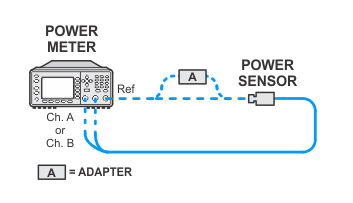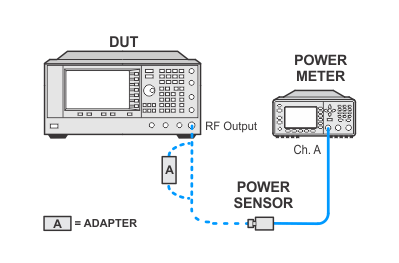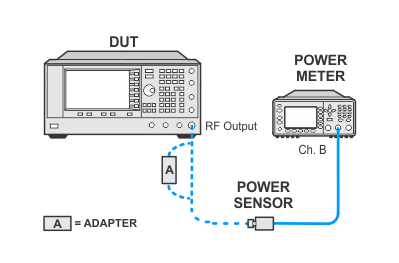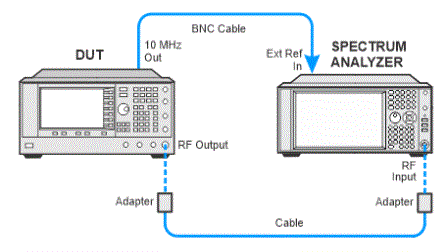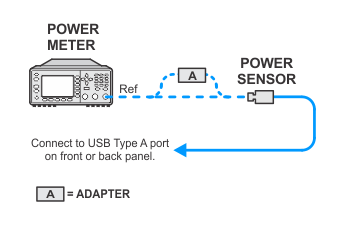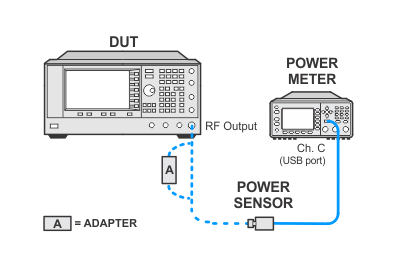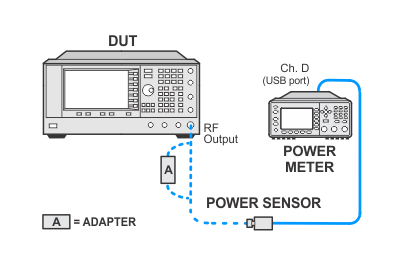![]()
-
All test equipment requires a 30 minute warmup period to ensure accurate performance.
-
In the following test setup, cables are designated as solid lines and direct connections are designated as dashed lines.
-
At low power levels, residual spurs from adjacent instruments can cause the DUT to fail the test. Therefore, the instruments must be adequately separated from one another. Do not place one device on top of another. If the test fails at very low power levels, offset all frequencies by +25 Hz or –25 Hz and manually verify. This will shift the test frequency away from possible residual responses.

 in the toolbar (webhelp only).
in the toolbar (webhelp only).